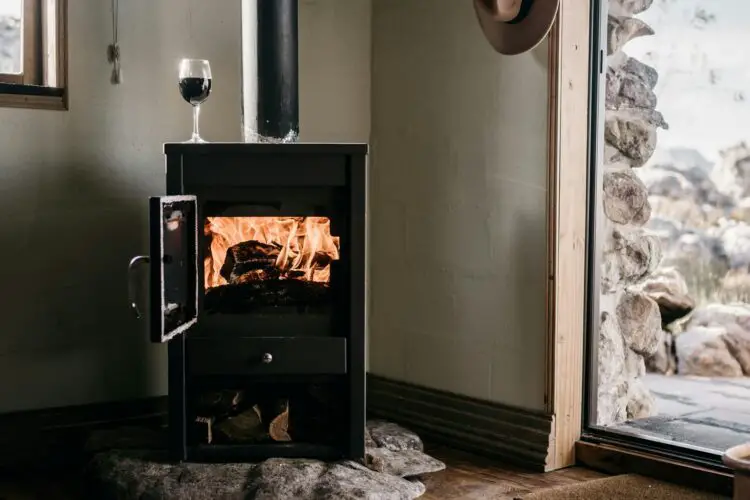Best Wood-Burning Stove: A Comprehensive Guide to Top Models
Selecting the best wood-burning stove for your home is a decision that involves careful consideration of various factors. From efficiency and heating capacity to design and features, there are several aspects to evaluate. In this article, we will explore and compare four top wood-burning stove models to assist you in making an informed decision.
1. Model A: Regency F3500
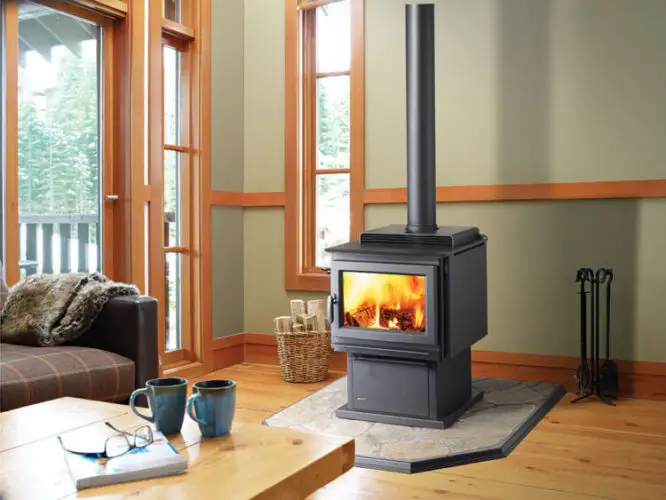
Features:
- Efficiency: The Regency F3500 boasts an impressive efficiency rating of over 80%, ensuring optimal heat output with minimal fuel consumption.
- Design: With a sleek and contemporary design, it seamlessly integrates into modern living spaces.
- Heating Capacity: Suitable for medium to large rooms, it has a heating capacity of up to 2,500 square feet.
- Additional Features: Comes with a built-in air wash system to keep the glass clean, providing an unobstructed view of the flames.
Pros:
- Energy-efficient, reducing fuel costs.
- Stylish design complements modern interiors.
- High heating capacity makes it suitable for larger spaces.
Cons:
- May have a higher initial cost compared to traditional models.
2. Model B: Vermont Castings Intrepid Flexburn
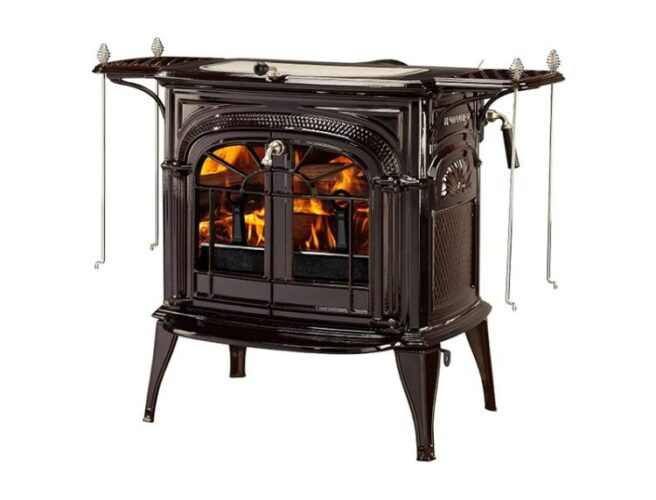
Features:
- Efficiency: This cast iron model offers efficiency around 75%, providing a balance between heat output and fuel consumption.
- Design: With a classic and timeless design, the Vermont Castings Intrepid Flexburn adds a rustic charm to any room.
- Heating Capacity: Ideal for small to medium-sized spaces, heating up to 1,800 square feet.
- Additional Features: Equipped with a secondary combustion system for enhanced efficiency and reduced emissions.
Pros:
- Durable cast iron construction ensures longevity.
- Classic design appeals to those seeking a traditional look.
- Secondary combustion system improves efficiency.
Cons:
- Slightly lower efficiency compared to some modern designs.
3. Model C: Lopi Cape Cod
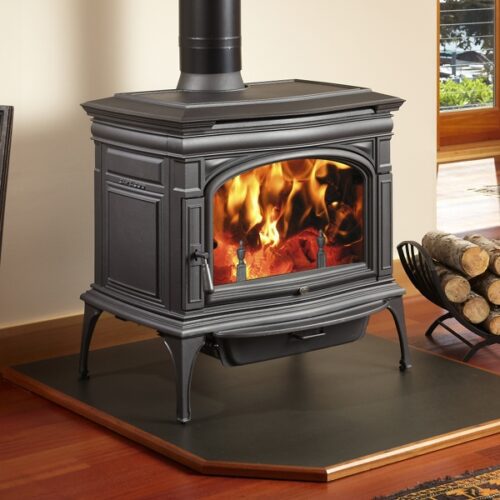
Features:
- Efficiency: This EPA-certified model exceeds 85% efficiency, making the Lopi Cape Cod one of the most environmentally friendly options.
- Design: Combining efficiency with aesthetics, it features a large glass door for an expansive view of the fire.
- Heating Capacity: Suitable for both small and large rooms, with a heating capacity of up to 2,500 square feet.
- Additional Features: Air-tight design and adjustable airflow for precise control over combustion.
Pros:
- High efficiency and EPA certification for reduced environmental impact.
- Large glass door enhances the viewing experience.
- Versatile heating capacity.
Cons:
- May require a higher upfront investment.
4. Model D: Napoleon S1
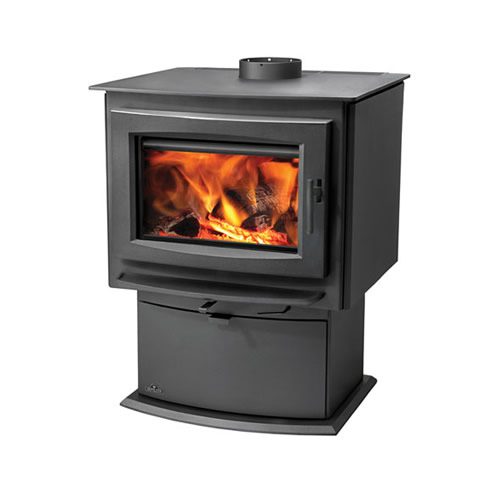
Features:
- Efficiency: Compact and efficient, the Napoleon S1 offers efficiency around 70%, making it suitable for smaller spaces.
- Design: Designed for portability, it is an excellent option for cabins, workshops, or as a supplementary heating source.
- Heating Capacity: Suitable for spaces up to 1,000 square feet, making it ideal for smaller rooms.
- Additional Features: Lightweight and easy to install, it can be placed in various locations.
Pros:
- Portable design offers flexibility in placement.
- Ideal for smaller spaces or as a secondary heating source.
- Budget-friendly option.
Cons:
- Limited heating capacity compared to larger models.
Comparison Table of Best Wood-Burning Stove:
| Model | Efficiency | Design | Heating Capacity | Additional Features |
|---|---|---|---|---|
| Regency F3500 | >80% | Contemporary | Up to 2,500 sq. ft. | Air wash system for clean glass |
| Vermont Castings Intrepid Flexburn | ~75% | Classic Cast Iron | Up to 1,800 sq. ft. | Secondary combustion system |
| Lopi Cape Cod | >85% | EPA-Certified | Up to 2,500 sq. ft. | Adjustable airflow, air-tight design |
| Napoleon S1 | ~70% | Compact and Portable | Up to 1,000 sq. ft. | Lightweight and portable design |
Choosing the best wood-burning stove involves weighing factors such as efficiency, design, heating capacity, and additional features. Each model presented here caters to different needs and preferences. Whether you prioritize modern aesthetics, classic charm, environmental friendliness, or portability, there is a wood-burning stove that suits your requirements. Refer to the comparison table to make a well-informed decision based on your unique preferences and heating needs.
Frequently Asked Questions (FAQ) about Wood-Burning Stoves
Q1: Do all wood-burning stoves have the same efficiency?
Answer: No, the efficiency of wood-burning stoves varies between models. Factors such as design, construction materials, and combustion technology contribute to differences in efficiency ratings.
Q2: What does the efficiency rating signify?
Answer: The efficiency rating represents how effectively a wood-burning stove converts the energy from burning wood into heat. A higher efficiency rating indicates better performance in terms of heat output per unit of fuel consumed.
Q3: Are contemporary wood-burning stoves more efficient than traditional models?
Answer: Contemporary wood-burning stoves often incorporate advanced technologies and design features that can contribute to higher efficiency. However, efficiency also depends on specific model characteristics.
Q4: Can a wood-burning stove be used as the primary heating source for a home?
Answer: Yes, many wood-burning stoves are designed to serve as primary heating sources. The suitability depends on factors such as the stove’s heating capacity, the size of the space, and insulation levels in the home.
Q5: What is the significance of EPA certification in wood-burning stoves?
Answer: EPA certification indicates that a wood-burning stove meets or exceeds environmental standards set by the U.S. Environmental Protection Agency. EPA-certified stoves are generally more efficient and produce fewer emissions compared to non-certified models.
Q6: Do wood-burning stoves require regular maintenance?
Answer: Yes, regular maintenance is essential to ensure the efficient and safe operation of a wood-burning stove. This includes cleaning the chimney, inspecting gaskets, and, if applicable, emptying ash pans.
Q7: Can a wood-burning stove be used in areas with strict air quality regulations?
Answer: EPA-certified wood-burning stoves are designed to comply with air quality regulations. However, local regulations may vary, and it is advisable to check with local authorities before installing a wood-burning stove.
Q8: What is the lifespan of a wood-burning stove?
Answer: The lifespan of a wood-burning stove depends on factors such as usage, maintenance, and the quality of materials. High-quality stoves can last 20 years or more with proper care.
Q9: Are portable wood-burning stoves effective for heating small spaces?
Answer: Yes, portable wood-burning stoves, designed for smaller spaces, can be effective as secondary heating sources. They are often suitable for cabins, workshops, or rooms where a compact heating solution is needed.
Q10: Can a wood-burning stove be installed without professional assistance?
Answer: While some models are designed for easier installation, it is recommended to seek professional assistance for proper installation. Professional installation ensures safety, compliance with local regulations, and optimal performance.
Remember, these answers are general guidelines, and it’s essential to consult the specific user manual and guidelines provided by the manufacturer for each wood-burning stove model. Additionally, local regulations and requirements may impact the installation and use of wood-burning stoves in certain areas.

